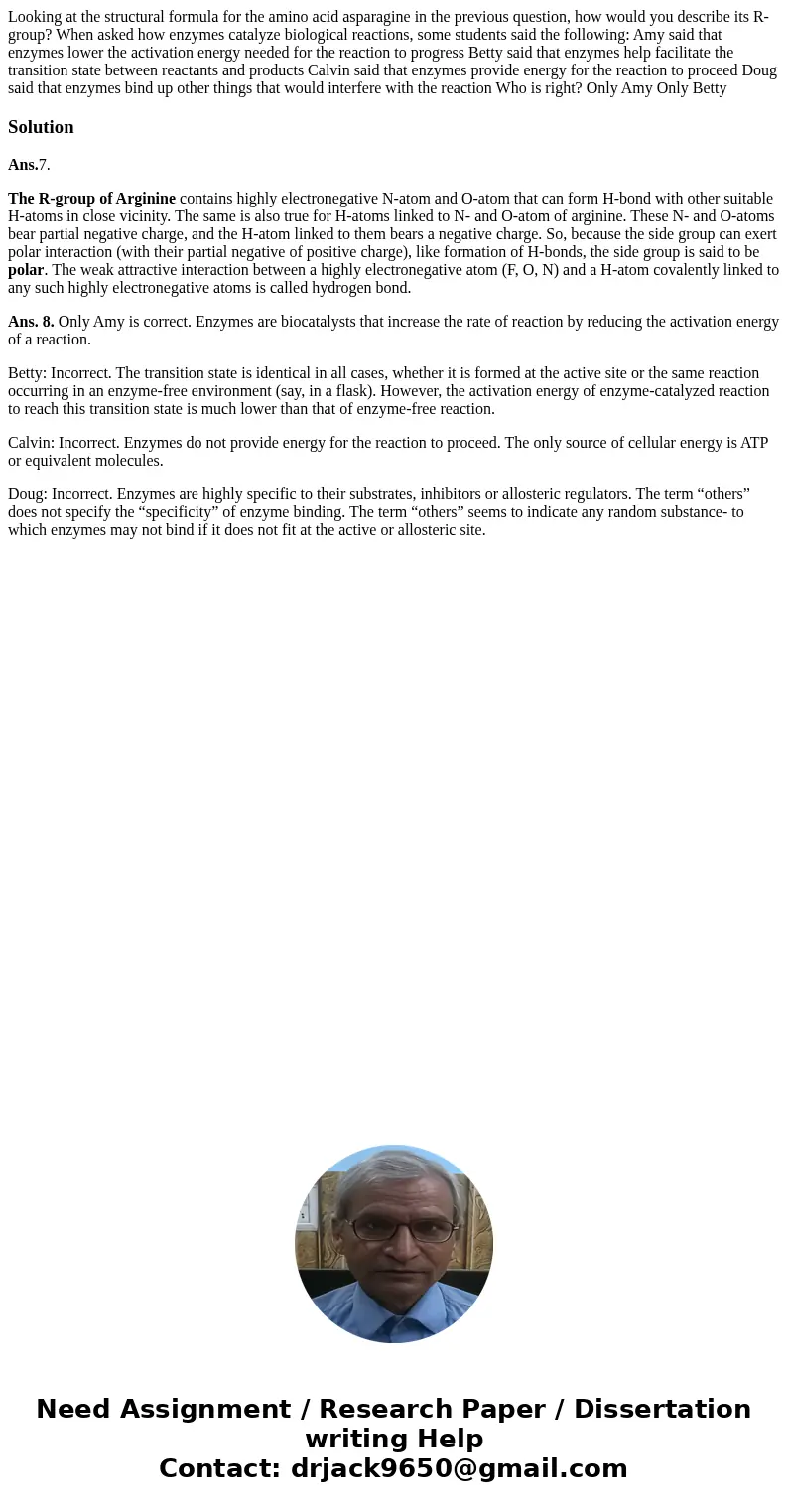Looking at the structural formula for the amino acid asparag
Solution
Ans.7.
The R-group of Arginine contains highly electronegative N-atom and O-atom that can form H-bond with other suitable H-atoms in close vicinity. The same is also true for H-atoms linked to N- and O-atom of arginine. These N- and O-atoms bear partial negative charge, and the H-atom linked to them bears a negative charge. So, because the side group can exert polar interaction (with their partial negative of positive charge), like formation of H-bonds, the side group is said to be polar. The weak attractive interaction between a highly electronegative atom (F, O, N) and a H-atom covalently linked to any such highly electronegative atoms is called hydrogen bond.
Ans. 8. Only Amy is correct. Enzymes are biocatalysts that increase the rate of reaction by reducing the activation energy of a reaction.
Betty: Incorrect. The transition state is identical in all cases, whether it is formed at the active site or the same reaction occurring in an enzyme-free environment (say, in a flask). However, the activation energy of enzyme-catalyzed reaction to reach this transition state is much lower than that of enzyme-free reaction.
Calvin: Incorrect. Enzymes do not provide energy for the reaction to proceed. The only source of cellular energy is ATP or equivalent molecules.
Doug: Incorrect. Enzymes are highly specific to their substrates, inhibitors or allosteric regulators. The term “others” does not specify the “specificity” of enzyme binding. The term “others” seems to indicate any random substance- to which enzymes may not bind if it does not fit at the active or allosteric site.

 Homework Sourse
Homework Sourse